It's time for new energy sources! What's good about a solar collector for heating
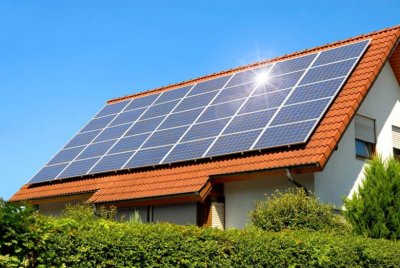
Energy sources such as electricity, coal and gas are constantly becoming more expensive.
People have to think more about their use more environmentally friendly systems heating.
That's why it was developed technical innovation in the field of alternative heat sourcesFor this purpose, solar collectors began to be used.
Content
Solar collector for heating
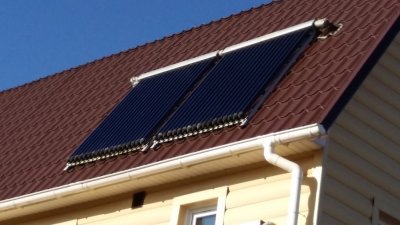
The surface of this device has low reflectivity, due to which heat is absorbed. For heating the room This mechanism uses the sun's light and its infrared radiation.
To heat water and heat a home, the power of a simple solar collector is enough. It depends on the design of the unit. A person can install the equipment himself. For this, you do not need to use expensive tools and materials.
Reference. The efficiency of professional devices is 80-85%. Homemade ones are much cheaper, but their efficiency no more than 60-65%.
Design
The structure of the equipment is simple. The device is a rectangular plate consisting of several layers:
- Anti-glare tempered glass cover with frame;
- absorber;
- bottom insulation;
- lateral insulation;
- pipeline;
- glass curtain;
- weather-resistant aluminum housing;
- connecting nipples.
The system includes 1-2 collectors, a storage tank and a pre-chamber. The structure is organized in a closed manner, so the sun's rays only get into it and turn into heat.
Operating principle
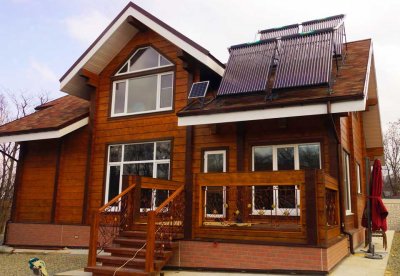
The basis of the operation of the installation is thermosiphonThe coolant inside the equipment circulates independently, which will help to eliminate the need for a pump.
The heated water tends to rise, thereby pushing aside the cold water and transporting it to the heat source.
The collector is a tubular radiator that is mounted in a wooden box, one plane of which is made of glass. Steel pipes are used in the manufacture of the unit. The outlet and supply are carried out by pipes used in the installation of water supply.
The design works like this:
- The collector converts solar energy into heat.
- The liquid enters the storage tank through the supply line.
- The circulation of the coolant occurs independently or with the help of an electric pump.. The liquid in the installation must meet several requirements: it must not evaporate at high temperatures, be non-toxic, and frost-resistant. Usually, distilled water mixed with glycol is used. in a ratio of 6:4.
Solar concentrator
A device for accumulating solar energy, has the function of a coolant. Serves to focus energy on the emitter receiver inside the product.
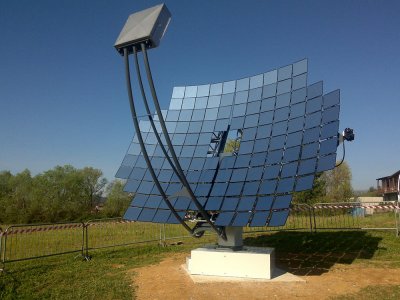
There are the following types:
- parabolic trough concentrators;
- flat lens concentrators (Fresnel lenses);
- on spherical lenses;
- parabolic concentrators;
- solar towers.
Concentrators reflect radiation from a large plane to a small one, which helps to achieve high temperatures. The liquid absorbs heat and moves it to the heating object.
Important! The price of the devices is not cheap, and also they require constant qualified maintenance. Such equipment is used in hybrid systems, most often on an industrial scale, and allows increasing the productivity of the collector.
Types of solar collectors
Currently, there are several types of solar heating collectors.
Flat, its installation with your own hands
This device consists of a panel into which an absorber plate is mounted. This type of device is the most common. The cost price of the units is affordable and depends on the type of coating, the manufacturer, the power and the heating area. Prices for equipment of this type are from 12 thousand rubles.
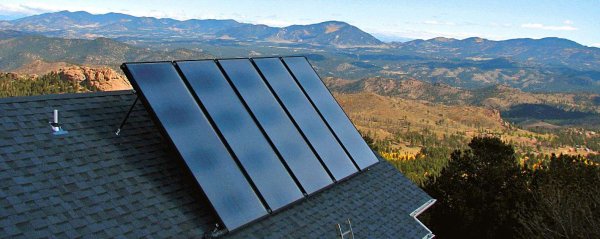
Photo 1. Five flat-type solar collectors installed on the roof of a private house. The devices are tilted.
Scope of application
Similar collectors are more often installed in private homes for heating rooms and supplying the premises with hot water. The devices cope with heating water for a summer shower at the dacha. It is appropriate to use them in warm and sunny weather.
Attention! Collector surface must not be obscured by other buildings, trees or houses. This has a negative impact on productivity. The equipment is mounted on the roof or facade of the building, as well as on any suitable surface.
Flat collector design
Composition of the device:
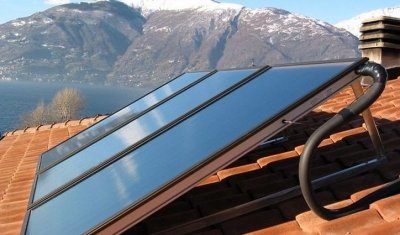
- protective glass;
- copper tubes;
- thermal insulation;
- absorbent surface with high absorption degree;
- aluminum frame.
A collector with a tubular coil is a classic option. As an alternative in homemade designs, the following are used: polypropylene material, aluminum drink cans, rubber garden hoses.
The bottom and edges of the system must be thermally insulated. If the absorber is in contact with the body, heat loss is possible. The outer part of the device is protected by tempered glass with special properties. Antifreeze is used as a heat carrier.
Operating principle
The liquid is heated and enters the storage tank, from which it is moved to the collector in a cooled form. The design is presented in two versions: single-circuit and double-circuit. In the first case the liquid goes straight into the tank, in the second — passes through a thin tube through the water in the container, warming up the volume of the room. As it moves, it cools down and moves back to the collector.
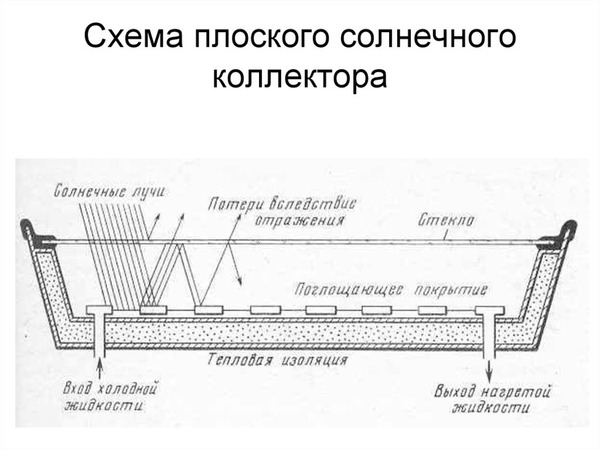
Photo 2. Diagram and principle of operation of a flat-type solar collector. The arrows indicate the parts of the device.
Pros and cons
Units of this type have the following advantages:
- high productivity;
- low cost price;
- long-term operation;
- reliability;
- the possibility of self-assembly and maintenance.
Flat collectors are suitable for operation in southern regions with warm climates. Their downside is high windage due to the large surface, so a strong wind can tear the structure off. Performance drops in cold winter weather. Ideally, the unit should be installed on the southern side of the site or house.
Vacuum
Device consists of individual tubes, united at the top and forming a single panel. In fact, each of the tubes is an independent collector. This is an effective modern type, suitable for use even in cold weather. Vacuum devices are more complex than flat ones, so they are more expensive.
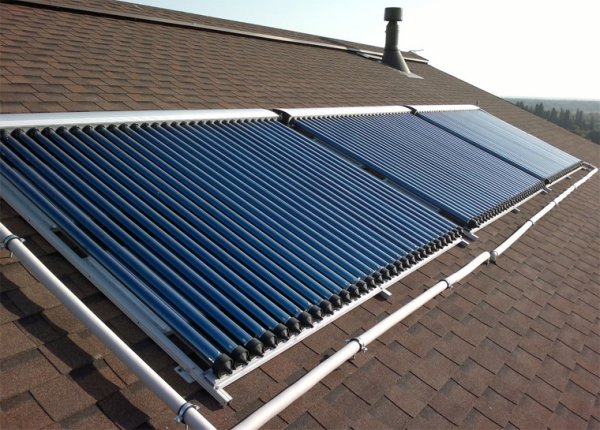
Photo 3. Vacuum-type solar collector. The device consists of many tubes fixed in one structure.
Scope of application
They are applied for hot water supply and heating of large areas. They are most often used in summer cottages and private homes. They are mounted on building facades, pitched or flat roofs, and special support structures. They function in cold climates and with short daylight hours, without reducing their efficiency. Due to their high efficiency, they are also used in agricultural lands and industrial enterprises. This type is common in European countries.
Design
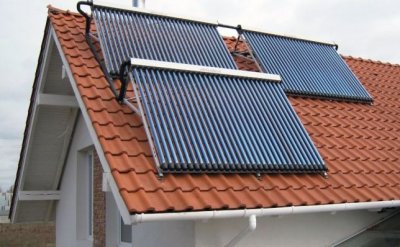
The device includes:
- heat storage tank (water tank);
- heat exchanger circulation circuit;
- the collector itself;
- sensors;
- receiver.
The design of the unit is a series of tubular profiles installed in parallel. The receiver and vacuum tubes are made of copper. The block of glass tubes is separated from the external circuit, due to which the collector does not stop working in case of failure. 1-2 tubes. Polyurethane insulation is used as additional protection.
Reference. A distinctive feature of the collector is the composition of the alloy from which the pipes are made. This aluminum coated and polyurethane protected copper.
Operating principle
Operation of the structure based on the zero thermal conductivity of a vacuumAn airless space is formed between the tubes, which reliably retains the heat generated by the sun's rays.
The vacuum manifold works like this:
- solar energy is received by a tube inside a vacuum flask;
- the heated liquid evaporates and rises into the condensation area of the pipe;
- the coolant flows down from the condensation zone;
- the cycle repeats itself again.
Thanks to such work much higher heat transfer level, and heat loss is low. Energy is saved due to the vacuum layer, which effectively traps heat.
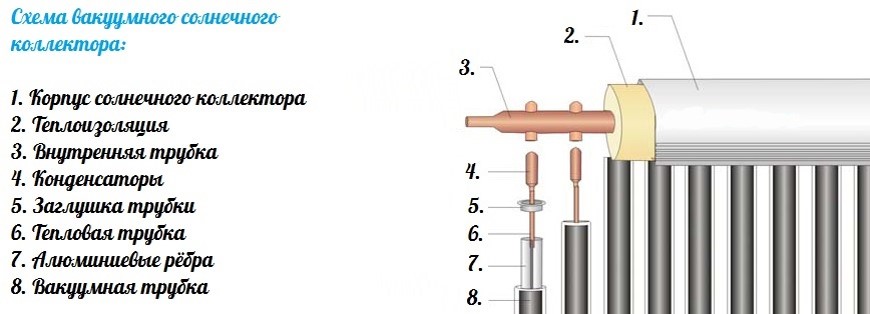
Photo 4. Schematic diagram of the vacuum solar collector. The components of the device are indicated by arrows.
Pros and cons
Advantages of this type of devices:
- durability;
- stability in operation;
- affordable repair, it is possible to replace only one element that has failed, and not the entire structure;
- low windage, ability to withstand gusts of wind;
- maximum absorption of solar energy.
The equipment is expensive and will only pay for itself in a few years. after use. The cost of components is also high, and their replacement may require the help of a professional. The system is not capable of self-cleaning from ice, snow, and frost.
Types of vacuum collectors
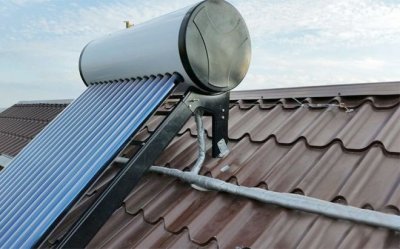
There are two types of products: with indirect and direct heat supply. The operation of structures with indirect supply is carried out by the pressure in the pipes.
In devices with direct heat supply, the heat carrier container and glass vacuum devices are mounted to the frame at a certain angle, through a connecting ring made of rubber.
Equipment connects to water supply lines via a shut-off valve, and the water level in the tank is controlled by a locking valve.
Air
Water has a much higher heat capacity than air. However, its use is associated with a number of household problems during operation (pipe corrosion, pressure control, change in aggregate state). Air collectors not so whimsical, have a simple design. The devices cannot be considered a full replacement for other types, but they are able to reduce utility costs.
Scope of application
Equipment of this type is used in air heating of houses, dehumidification systems And for air recovery (processing). It is used for drying agricultural products.
Design
Consists of:
- adsorber, a heat-absorbing panel inside the case;
- external insulation made of tempered glass;
- thermal insulation between the housing wall and the absorber;
- sealed housing.
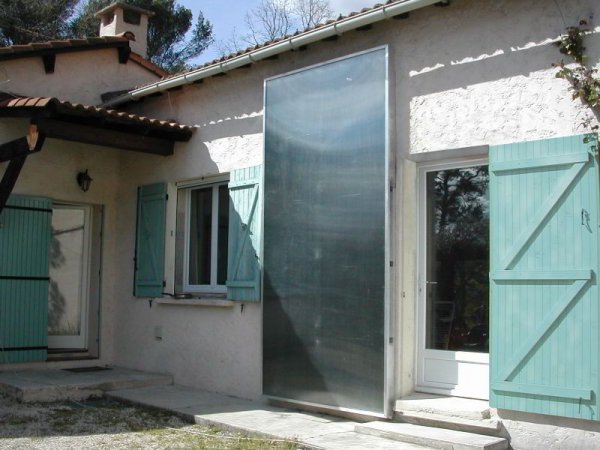
Photo 5. Air solar collector for heating a house. The device is fixed vertically on the wall of the building.
The device is located close to the heating object due to large heat losses in air ducts.
Operating principle
Unlike water collectors, air heaters do not accumulate heat, but immediately release it into the insulation. Sunlight hits the outer part of the device and heats it, air begins to circulate in the structure and heats the room.
You can design an air collector yourself, using available materials in production: Beer cans made of copper or aluminum, chipboard panels, aluminum and metal sheets.
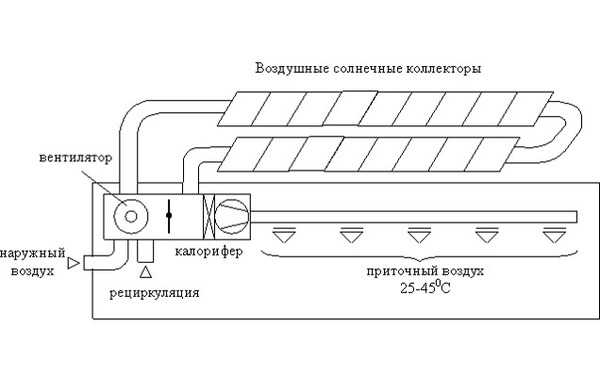
Photo 6. Diagram of the air solar collector. The drawing shows the main parts of the device.
Pros and cons
Advantages:
- cheapness of the device;
- possibility of self-installation and repair;
- simplicity of design.
Disadvantages: limited scope of application (heating only), low efficiency. At night, the equipment will work to cool the air if it is not closed.
Selecting a solar collector kit for a heating system
Selecting a device depends on the goals for which the design work will be directed. The heliosystem is used to support air, provide hot water supply, and heat water for the pool.
Power
To calculate the possible power of a solar system, you need to know 2 parameters: solar insolation in a given region at a given time of year and the effective absorption area of the collector. These figures must be multiplied.
Is it possible to use the collector in winter?
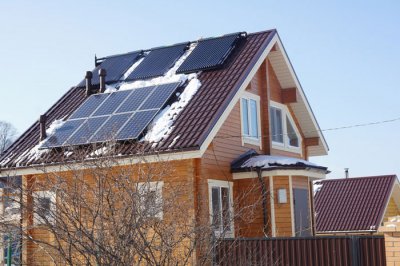
Vacuum devices cope with work in cold climates. Flat show low performance in cold weather and are better suited for southern regions.
Less suitable for functioning in cold conditions air structure because at night it is not able to heat the air.
Heavy precipitation causes inconvenience, because in winter the equipment is often covered with snow and requires regular cleaning. Frosty air takes away the accumulated heat, and the collector itself can be damaged by hail.
Taking into account the scope of application
In industry, the use of solar systems is more widespread.. Solar energy is used in the operation of power plants, steam generators, and water desalination plants. Vacuum collectors are often installed for heating water, a summer house or a bathhouse in domestic conditions, and flat collectors are installed less often. Air systems help reduce the cost of heating by heating the air during the daytime.
Vacuum collectors operate one third more efficiently than flat collectors. Over the course of a year, savings amount to 20-25% more. The selection and installation of tubular collectors should be taken seriously, since, compared to others, they are more susceptible to the destructive effects of precipitation.
Technical information
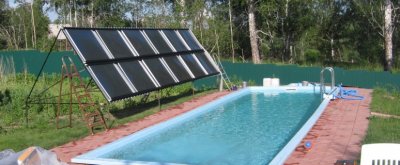
When purchasing collectors, pay attention to the operating conditions. The most important parameters will be total heating area, active area, heat loss indicators, angular coefficient, efficiency parameters.
Knowing this data will allow you to calculate productivity operation of a specific unit. The buyer has the right to request the sellers to provide the relevant calculations and available certificates.
Heating with solar panels
In countries, where two thirds of the days are mostly clear, install solar panels. These devices operate on the basis of the photoelectric effect and convert the sun's energy into heat.
Operating principle
This The equipment is divided into autonomous and powered by the power grid. The first ones accumulate energy in storage devices, which allows heating to continue in the absence of light. The devices of the second category are connected to the power grid through a special inverter. This equipment is quite reliable, but stops working in the event of a power outage.
Pros and cons
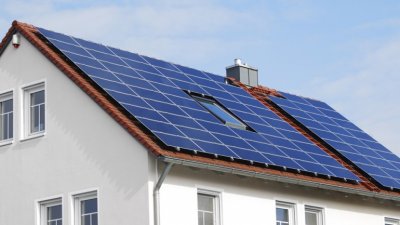
The use of solar panels helps ensure the smooth operation of fire alarm systems, security surveillance and heating systems.
They environmentally friendly, wear-resistant and operate silently.
The disadvantages include low productivity., especially in temperate and cool climates. Initially, the equipment requires large investments, pays off slowly, a large amount of auxiliary equipment and qualified maintenance are required.
Popular manufacturers
The world's top solar panel developers:
- Sharp (Japan);
- First Solar (USA);
- Suntech Power Co. (China);
- Trina Solar (PRC);
- Yingli Green Energy (China).
Useful video
Watch a video that explains how solar collectors work in winter.
Benefits of using
The factor in determining the functionality of collectors is region of residence of the consumer. The more sunny days there are in a given area per year, the higher the efficiency of the unit. In any case, using solar energy for heating will allow you to reduce utility costs to a greater or lesser extent and be independent of heating services.









